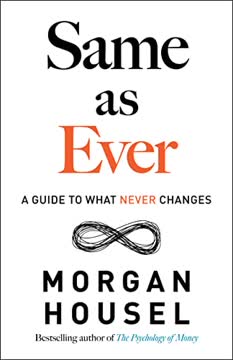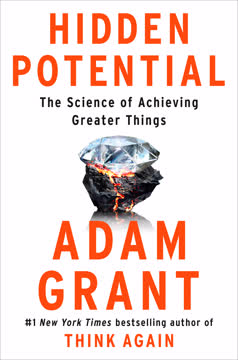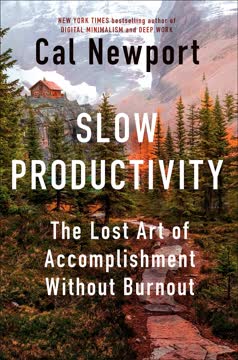Key Takeaways
1. Redefining Toughness: From Bulldozing to Navigating Discomfort
Real toughness is experiencing discomfort or distress, leaning in, paying attention, and creating space to take thoughtful action. It's navigating discomfort to make the best decision you can.
Old model vs. new model. The traditional view of toughness emphasized pushing through pain, ignoring emotions, and "grinding it out" at all costs. This approach often leads to burnout, injury, and poor decision-making. The new model of toughness focuses on:
- Awareness: Recognizing and acknowledging discomfort
- Engagement: Leaning into challenging situations rather than avoiding them
- Thoughtful action: Making deliberate choices rather than reactive decisions
- Flexibility: Adapting strategies based on the situation
Benefits of the new approach. By redefining toughness as a skill of navigation rather than mere endurance, individuals can:
- Improve performance in high-pressure situations
- Develop greater resilience and adaptability
- Make better decisions under stress
- Avoid burnout and maintain long-term well-being
2. Embrace Reality: Accurate Self-Assessment is Key to Performance
Performance = Actual demands ÷ Expected demands
Realistic expectations matter. Accurately assessing both the demands of a situation and your own capabilities is crucial for optimal performance. This balance allows you to:
- Set appropriate goals
- Allocate resources effectively
- Avoid unnecessary stress and disappointment
Strategies for better self-assessment:
- Gather objective feedback
- Reflect on past performances
- Seek input from mentors or coaches
- Regularly update your self-evaluation
By aligning expectations with reality, you create a foundation for sustained growth and improvement, rather than cycling between overconfidence and disappointment.
3. True Confidence is Quiet: Develop Inner Strength, Not External Bravado
Arrogance sits on insecurity; confidence sits on experience.
Quiet confidence vs. loud insecurity. True confidence is rooted in self-awareness, experience, and a realistic assessment of one's abilities. It doesn't need to be loudly proclaimed or constantly demonstrated. In contrast, arrogance and bravado often mask deep-seated insecurities.
Cultivating inner confidence:
- Focus on personal growth and skill development
- Celebrate small wins and progress
- Learn from failures and setbacks
- Develop a growth mindset
- Practice self-compassion
By building genuine confidence based on experience and self-awareness, you become more resilient in the face of challenges and better equipped to handle both success and failure.
4. Control and Choice: The Foundation of Resilience
When we don't have control, we lose the capacity to cope. It's when we have a choice that toughness is trained.
The power of perceived control. Feeling a sense of control over one's circumstances is crucial for developing resilience and toughness. When individuals believe they have choices and can influence outcomes, they are more likely to:
- Persist in the face of challenges
- Maintain motivation
- Develop creative solutions to problems
Strategies for increasing sense of control:
- Identify areas where you have influence
- Break large tasks into smaller, manageable steps
- Practice decision-making in low-stakes situations
- Reflect on past instances where you successfully exercised control
Leaders and educators can foster resilience by creating environments that allow for autonomy and decision-making, even in small ways.
5. Emotions as Messengers: Listen to Your Body's Signals
Feelings send a message, conveying information and nudging us toward a behavior.
Emotions as information. Rather than viewing emotions as obstacles to be overcome, the new model of toughness recognizes them as valuable sources of information about our internal and external environment. By learning to interpret these signals, we can:
- Make more informed decisions
- Respond more effectively to challenges
- Improve our overall well-being
Developing emotional intelligence:
- Practice mindfulness to increase awareness of emotions
- Learn to label emotions with specificity
- Explore the underlying causes of emotional responses
- Use emotions as data points in decision-making processes
By treating emotions as messengers rather than enemies, we can harness their power to inform our actions and improve our performance.
6. Master Your Inner Dialogue: Flexibility in Self-Talk
If the messenger (feeling) shouts loud enough, a corresponding thought will enter our awareness to motivate us toward a behavioral response or action. Our inner speech serves to integrate our variety of systems or selves. To bring concerns and motives to awareness and decide what to do with them.
The power of self-talk. Our inner dialogue plays a crucial role in how we interpret and respond to challenges. Developing flexibility in self-talk allows us to:
- Reframe negative situations
- Boost motivation and confidence
- Regulate emotions more effectively
- Make better decisions under pressure
Strategies for mastering inner dialogue:
- Practice positive self-talk without ignoring reality
- Use third-person or second-person language for psychological distance
- Develop a repertoire of motivational phrases or mantras
- Challenge and reframe negative self-talk
By becoming more aware of and intentional about our inner dialogue, we can better navigate difficult situations and maintain a resilient mindset.
7. Respond, Don't React: Creating Space Between Stimulus and Response
Respond to reality. For most of us, we are not only responding to the actual stress but the reverberations of it. Tough individuals learn to match perception with reality so that they marshal the appropriate response instead of an exaggerated one.
The importance of space. Creating a gap between a stimulus (e.g., a stressful event) and our response allows us to choose more effective actions rather than reacting automatically. This space enables us to:
- Assess the situation more accurately
- Consider multiple options
- Regulate our emotions
- Align our response with our values and goals
Techniques for creating space:
- Practice mindfulness meditation
- Use the "pause and breathe" technique
- Implement a personal "cooling off" period before making decisions
- Develop a pre-performance routine to center yourself
By cultivating this ability to pause and respond thoughtfully, we can make better decisions under pressure and avoid escalating stressful situations.
8. Cultivate Flexible Coping Strategies for Optimal Performance
The best performers tend to have a flexible and adaptive coping ability. They can bounce between different strategies, depending on the demands of the situation.
Adaptability is key. Rather than relying on a single coping strategy, truly tough individuals develop a range of techniques they can apply flexibly based on the specific challenges they face. This adaptability allows them to:
- Respond more effectively to diverse situations
- Maintain performance under varying conditions
- Recover more quickly from setbacks
Developing a coping toolbox:
- Distraction techniques for short-term stress relief
- Mindfulness practices for increased awareness
- Cognitive reframing to change perspective
- Problem-solving strategies for actionable challenges
- Social support seeking when appropriate
By cultivating a diverse set of coping strategies and learning when to apply each one, individuals can better navigate the complex landscape of personal and professional challenges.
9. Satisfy Basic Psychological Needs to Foster True Toughness
When we satisfy our needs, we are allowed to fulfill our potential. Satisfying our basic needs is the fuel that allows us to put to work all of the tools we've developed to be tough.
The foundation of toughness. Meeting our core psychological needs for autonomy, competence, and relatedness creates a stable platform from which we can develop and apply toughness skills. When these needs are met, individuals are more likely to:
- Persist in the face of challenges
- Maintain intrinsic motivation
- Develop resilience and adaptability
Strategies for satisfying psychological needs:
- Autonomy: Seek opportunities for choice and self-direction
- Competence: Set challenging but achievable goals, celebrate progress
- Relatedness: Cultivate meaningful relationships and social support
Leaders, educators, and coaches can foster toughness by creating environments that support these basic needs, rather than relying on external motivators or punitive measures.
10. Find Meaning in Discomfort: The Path to Post-Traumatic Growth
When we explore instead of avoid, we are able to integrate the experience into our story. We're able to make meaning out of struggle, out of suffering. Meaning is the glue that holds our mind together, allowing us to both respond and recover.
Transforming adversity. By finding meaning in difficult experiences, we can not only survive challenges but potentially grow from them. This process of post-traumatic growth enables individuals to:
- Develop greater resilience
- Gain new perspectives on life
- Deepen relationships and empathy
- Discover new strengths and capabilities
Strategies for meaning-making:
- Reflect on how challenges have shaped your values and priorities
- Identify lessons learned from difficult experiences
- Connect your struggles to a larger purpose or goal
- Share your story with others to create connection and inspire
By reframing discomfort and adversity as opportunities for growth and meaning, we can develop a more robust and adaptable form of toughness that serves us well in all areas of life.
Last updated:
FAQ
What's Do Hard Things about?
- Redefining Toughness: The book challenges traditional views of toughness, which often focus on stoicism and emotional suppression, advocating instead for a model that includes vulnerability and emotional awareness.
- Four Pillars Framework: Steve Magness introduces four pillars—Ditch the Facade, Listen to Your Body, Respond Instead of React, and Transcend Discomfort—to build real inner strength and resilience.
- Scientific Approach: It integrates research from psychology, neuroscience, and sports science to explain the mechanisms behind resilience and emotional regulation.
Why should I read Do Hard Things?
- Practical Strategies: The book offers actionable advice for developing resilience in various life areas, from sports to personal challenges, making it applicable and useful.
- Challenging Misconceptions: It confronts outdated beliefs that equate toughness with emotional callousness, encouraging readers to embrace emotions as part of strength.
- Inspiring Examples: Magness shares stories from athletes, coaches, and military personnel, making the concepts relatable and engaging.
What are the key takeaways of Do Hard Things?
- Embrace Vulnerability: True toughness involves understanding and accepting emotions, which aids in better decision-making and resilience.
- Control and Autonomy: Having control over choices and actions is crucial for persistence through challenges, fostering empowerment.
- Interoception Importance: Understanding bodily signals is vital for navigating discomfort and enhancing emotional regulation and decision-making.
How does Do Hard Things redefine toughness?
- Rejecting Old Models: The book critiques traditional toughness views that equate it with emotional suppression, advocating for emotional intelligence and vulnerability.
- Emphasizing Inner Strength: Real toughness is about navigating discomfort and making thoughtful decisions, fostering resilience rather than fragility.
- Science and Experience: Magness combines scientific research with personal anecdotes to illustrate how redefining toughness can lead to better outcomes.
What are the four pillars of toughness in Do Hard Things?
- Ditch the Facade: Encourages embracing true selves and acknowledging limitations to cultivate genuine resilience.
- Listen to Your Body: Stresses tuning into bodily sensations and emotions for better decision-making and emotional regulation.
- Respond Instead of React: Focuses on maintaining a steady mind and responding thoughtfully rather than impulsively.
- Transcend Discomfort: Teaches that discomfort can be a source of growth, finding meaning in challenging experiences.
What is the significance of interoception in Do Hard Things?
- Understanding Bodily Signals: Interoception involves perceiving internal bodily signals, crucial for recognizing emotional states and informed decision-making.
- Enhancing Emotional Regulation: Improved interoceptive awareness aids in managing emotions and stress responses, linked to greater resilience.
- Practical Exercises: The book provides exercises to develop interoceptive skills, helping readers listen to their bodies for improved performance.
How does Do Hard Things address the relationship between emotions and decision-making?
- Emotions as Informative: Emotions serve as valuable messengers, providing insights into needs and responses, guiding better decision-making.
- Navigating Discomfort: Listening to emotions helps make informed choices about responding to challenges, preventing impulsive reactions.
- Building Emotional Intelligence: Magness encourages developing emotional awareness and regulation skills for improved resilience and effective navigation of complex situations.
What role does control play in developing toughness according to Do Hard Things?
- Empowerment Through Choice: Having control over actions and decisions is vital for resilience, fostering empowerment and persistence.
- Avoiding Learned Helplessness: Environments that strip autonomy can lead to helplessness, diminishing motivation and resilience.
- Training Hopefulness: Fostering a sense of control trains individuals to respond positively to adversity, enhancing well-being and toughness.
How does Do Hard Things define emotional regulation?
- Emotional Regulation as a Skill: It involves managing and responding to emotions healthily, recognizing feelings, understanding sources, and choosing appropriate responses.
- Importance of Awareness: Being aware of emotions is the first step in regulation, allowing thoughtful responses rather than impulsive reactions.
- Coping Strategies: Magness provides strategies like mindfulness and cognitive reframing to develop emotional regulation skills applicable in various situations.
What are the coping strategies discussed in Do Hard Things?
- Adjusting State of Mind: Shifting between mental states, like focusing on a task or gaining perspective, helps manage stress and maintain focus.
- Attending to Discomfort: Confronting discomfort directly aids in navigating emotions and developing resilience.
- Flexible Coping: Adaptability in coping strategies allows choosing the most effective approach based on the situation, key to maintaining mental toughness.
How does Do Hard Things address the concept of purpose?
- Purpose as a Motivator: A clear sense of purpose is essential for resilience and persistence, driving individuals through challenges.
- Finding Meaning in Suffering: Meaning derived from difficult experiences helps cope with adversity, viewing challenges as growth opportunities.
- Aligning Goals with Values: Aligning goals with personal values and passions fosters intrinsic motivation, aiding commitment to pursuits.
How can I apply the concepts from Do Hard Things in my life?
- Practice Self-Awareness: Tune into emotions and bodily sensations, reflecting on their influence on decisions and actions.
- Set Meaningful Goals: Align goals with values and passions to foster intrinsic motivation and commitment.
- Embrace Discomfort: Confront difficult situations head-on, seeking meaning in experiences to develop resilience and navigate challenges effectively.
Review Summary
Do Hard Things receives mixed reviews, with an average rating of 3.86/5. Many praise its insights on redefining toughness, blending science and personal anecdotes. Readers appreciate its practical applications in sports, mental health, and personal growth. Critics argue it lacks depth in scientific analysis and originality. Some find it too focused on athletics. Supporters highlight its accessible writing style and valuable takeaways on resilience, mindfulness, and performance. Overall, it's seen as a thought-provoking read on cultivating inner strength and navigating challenges.
Similar Books










Download PDF
Download EPUB
.epub digital book format is ideal for reading ebooks on phones, tablets, and e-readers.





